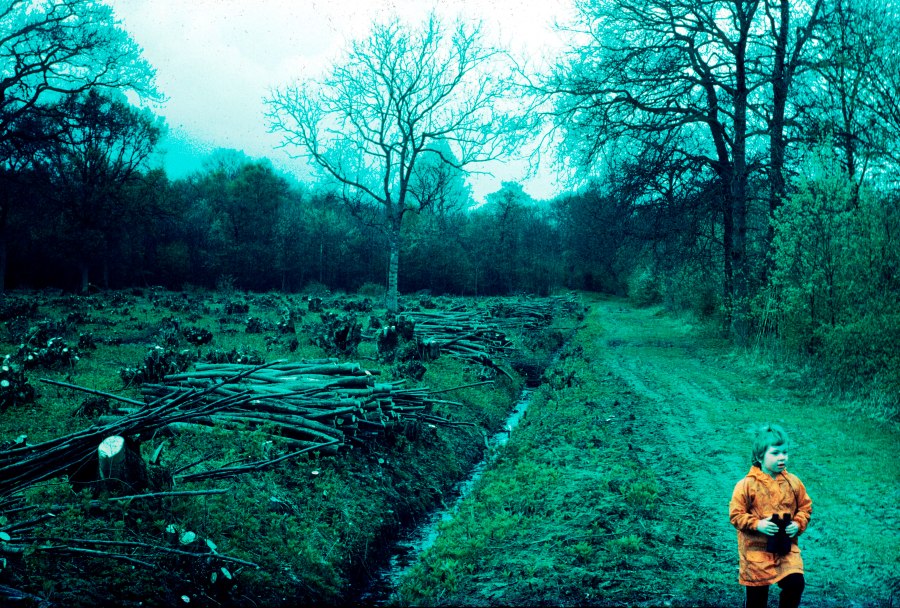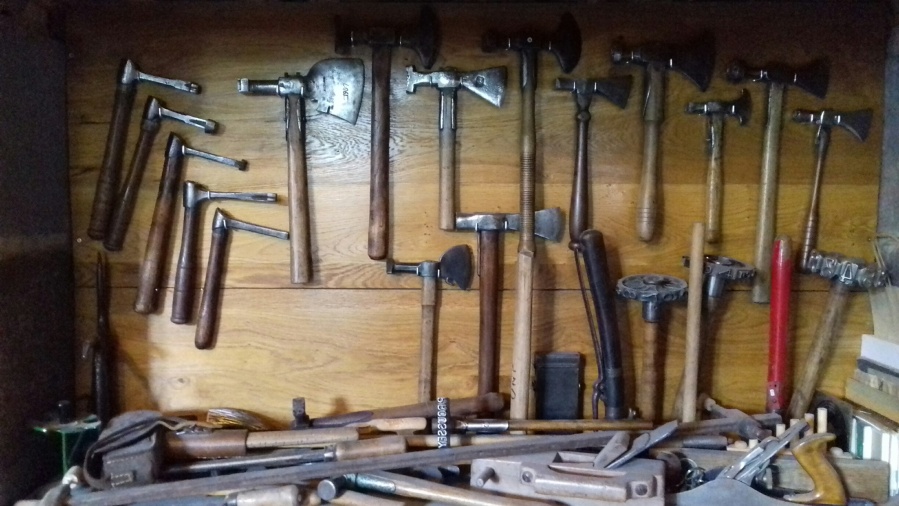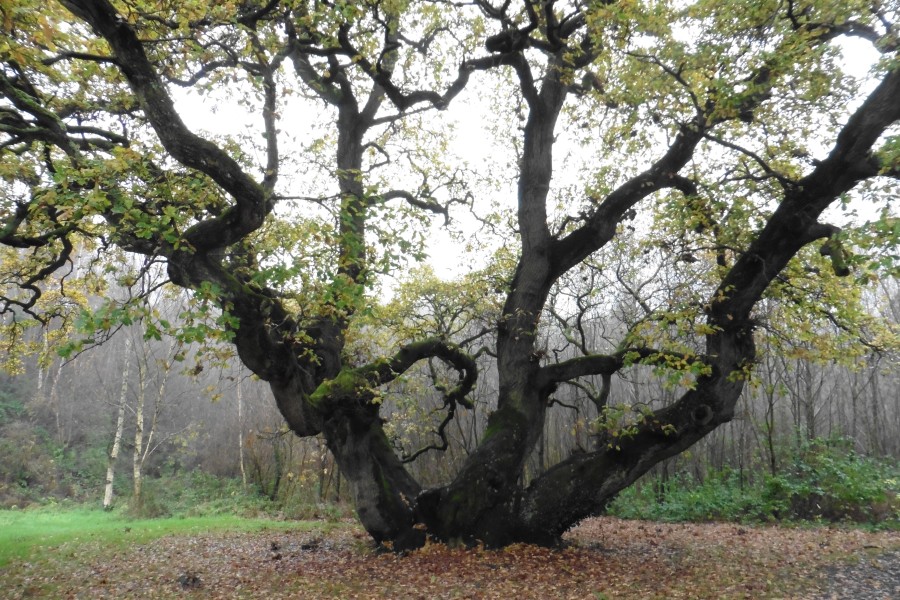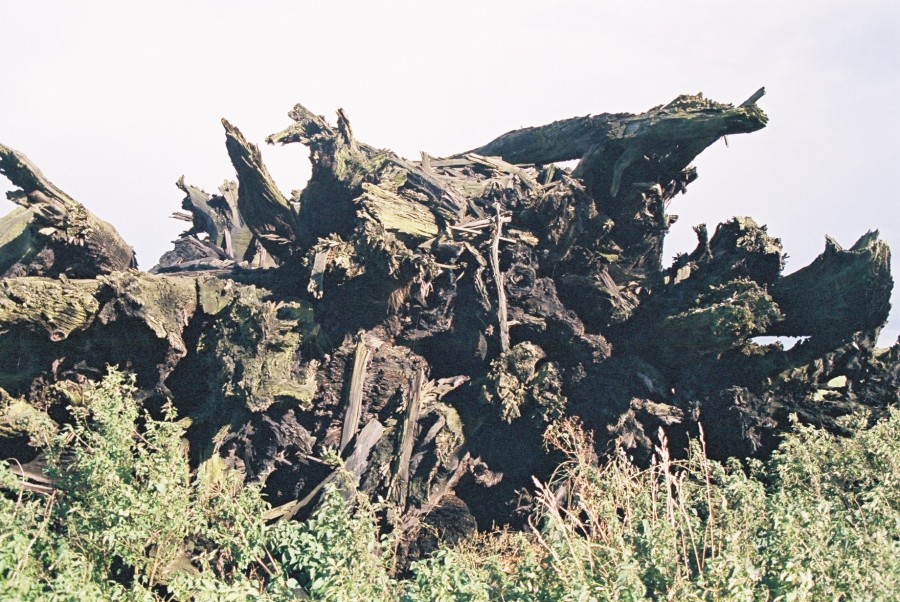The sun usually shone in my childhood memories, except that the Met. Office records say it did not. Similarly, one step on from the myth of the ‘noble savage’, we may imagine that prior to 1945 or 1900 or 1800 there was a period when sturdy peasants valued their trees and woods as part of… Continue reading 1066 and all that
The particular is as important as the general
Earlier this month I spent some time looking at Oliver Rackham’s notebooks in Corpus Christi College (Cambridge). I had seen copies of his field notes previously when Paula Keen organised some re-surveys of woods in South Wales to go with the posthumous publication of Rackham’s researches there (Rackham and Keen, 2022). So I was interested… Continue reading The particular is as important as the general
Oakwoods at the extremes
Much of my field work these days is in Wytham Woods where oak trees grow quite tall, with straight single trunks, on fertile soils, in a benign climate. However, a lot of other trees can grow well in such conditions and oaks may find themselves being overtopped by beech, ash or elm. It tends therefore… Continue reading Oakwoods at the extremes
Wood – the unsung super-material
We refer to parts of our prehistoric past as the stone ages but people depended more on wood, for fuel, for tools and weapons, as building materials. Along with and sometimes predating the iconic stone monuments were wooden circles and avenues, revealed through the surviving post holes (Noble, 2017). Stonehenge and Avebury Ring are impressive… Continue reading Wood – the unsung super-material
A trip to Belfast
The Old Man’s run-up to Christmas started as usual with the British Ecological Society’s Winter Meeting, held this year in Belfast. Prior to the meeting I got the bus out to Belvoir Park on the outskirts of the city, to see the ‘Belvoir Oak’ reputedly 500 years old and possibly the oldest oak in Northern… Continue reading A trip to Belfast
Really Ancient Forests
The tree and woodland cover of the pre-farming landscape (some 6,000 years ago) are a source of debate amongst ecologists: what were they like: how did they grow; what beasts roamed under their shade; what influence did the Mesolithic hunters and the mammoth-killing Palaeolithic peoples have? Mostly we rely on the interpretation of sub-fossil remains,… Continue reading Really Ancient Forests
Who said you could walk in my wood?
As kids we played freely in the fields and riverside behind our house – we knew the farmer that owned them, he knew us and (importantly) knew our parents to whom we would be reported if we were being a nuisance. Downstream and in the woods across the river, there was no such arrangement: we… Continue reading Who said you could walk in my wood?
What does having ‘a more mixed tree cover’ mean?
There is a general mantra that to make our tree cover more resilient to climate change and to other threats it would be a good idea to encourage more diversity in our tree species cover. At present a handful of conifers provide most of our wood production, while a similar number of broadleaves dominate in… Continue reading What does having ‘a more mixed tree cover’ mean?
The unknown woodman
When I lead walks round Wytham I often emphasise the legacy of the Fifth Earl of Abingdon (Montague Bertie), Colonel Raymond ffennell and Professor Charles Elton in the structure and composition of the woods as they are today. I think this this makes an interesting story for visitors, but it is adopting the ‘great man’… Continue reading The unknown woodman
When do you stop recording a long-term study?
At the beginning of Lord of the Rings, Bilbo Baggins organises a party at which he gives away presents to his guests. We later learn that this is a way of trying to make it easier for him to pass on the ‘one ring to rule them all’ to his nephew Frodo. It nearly doesn’t… Continue reading When do you stop recording a long-term study?









